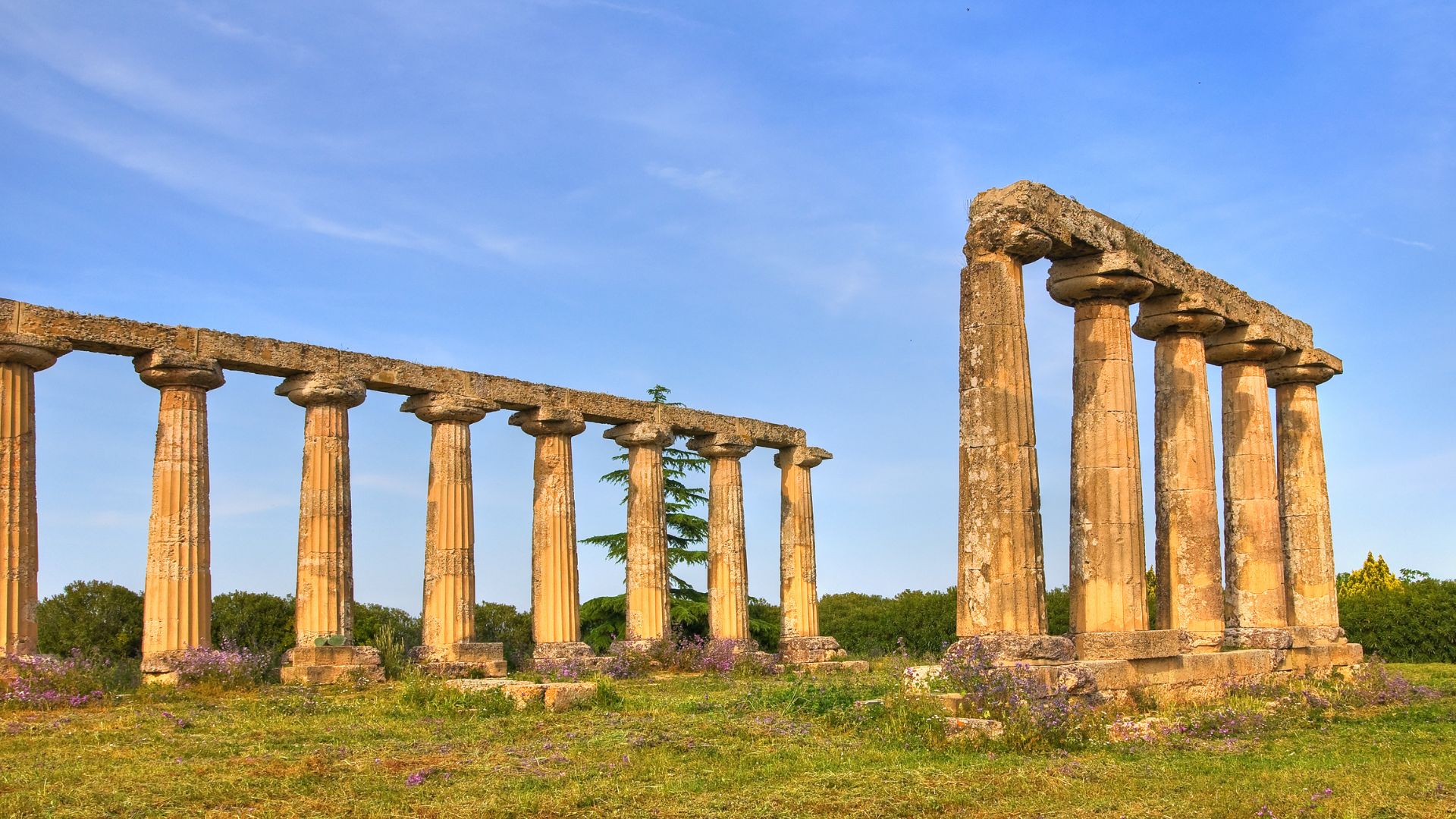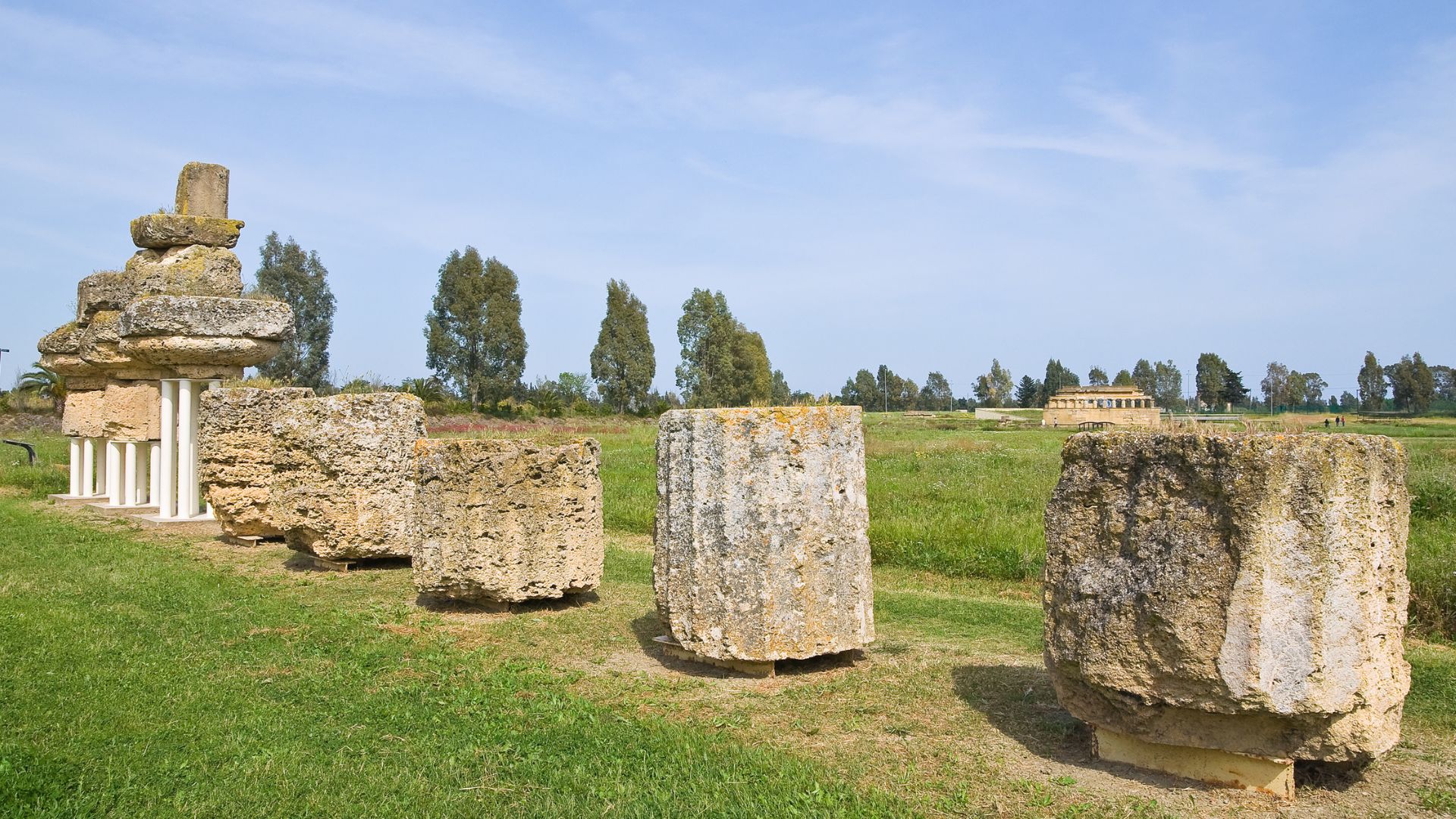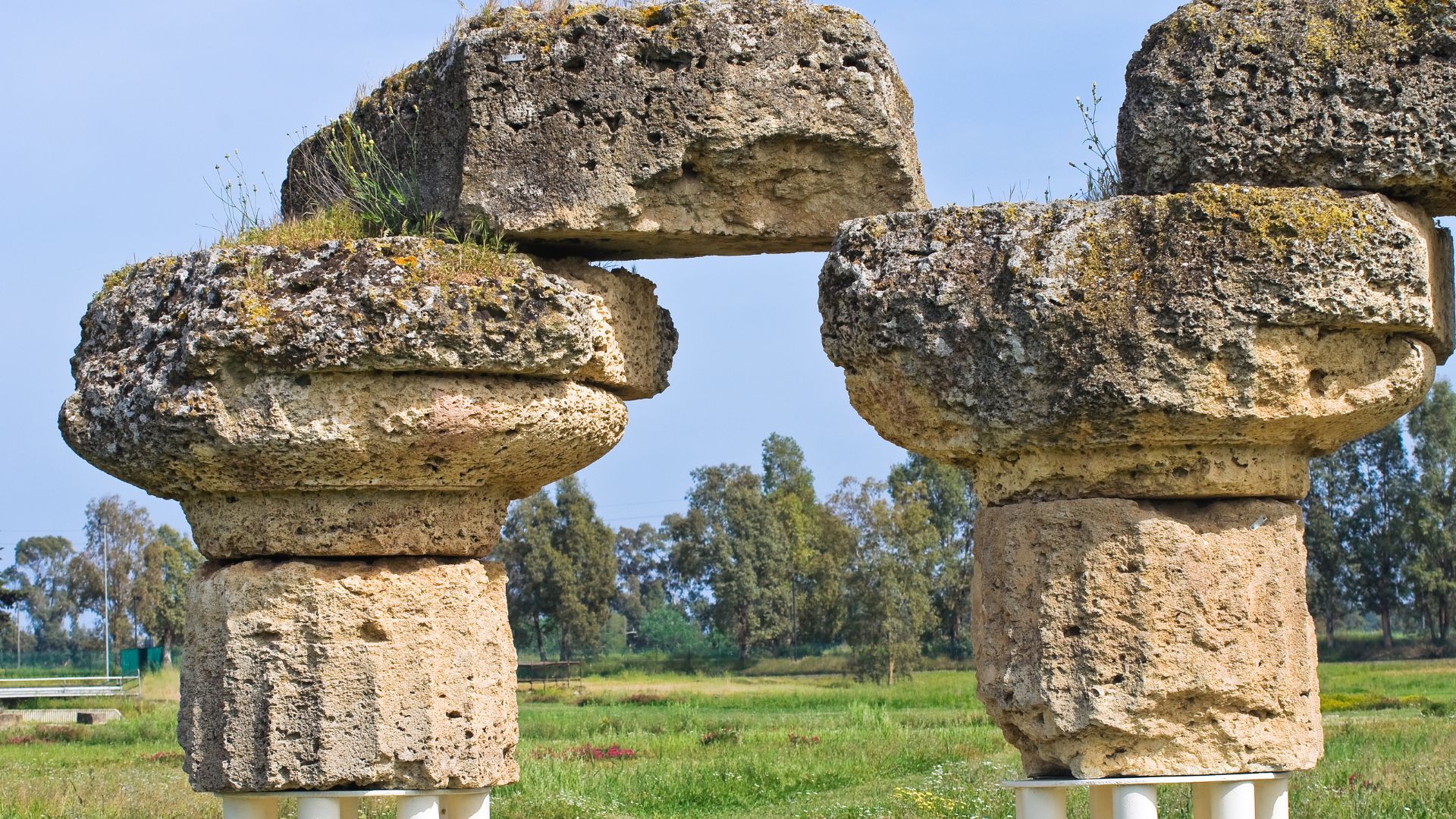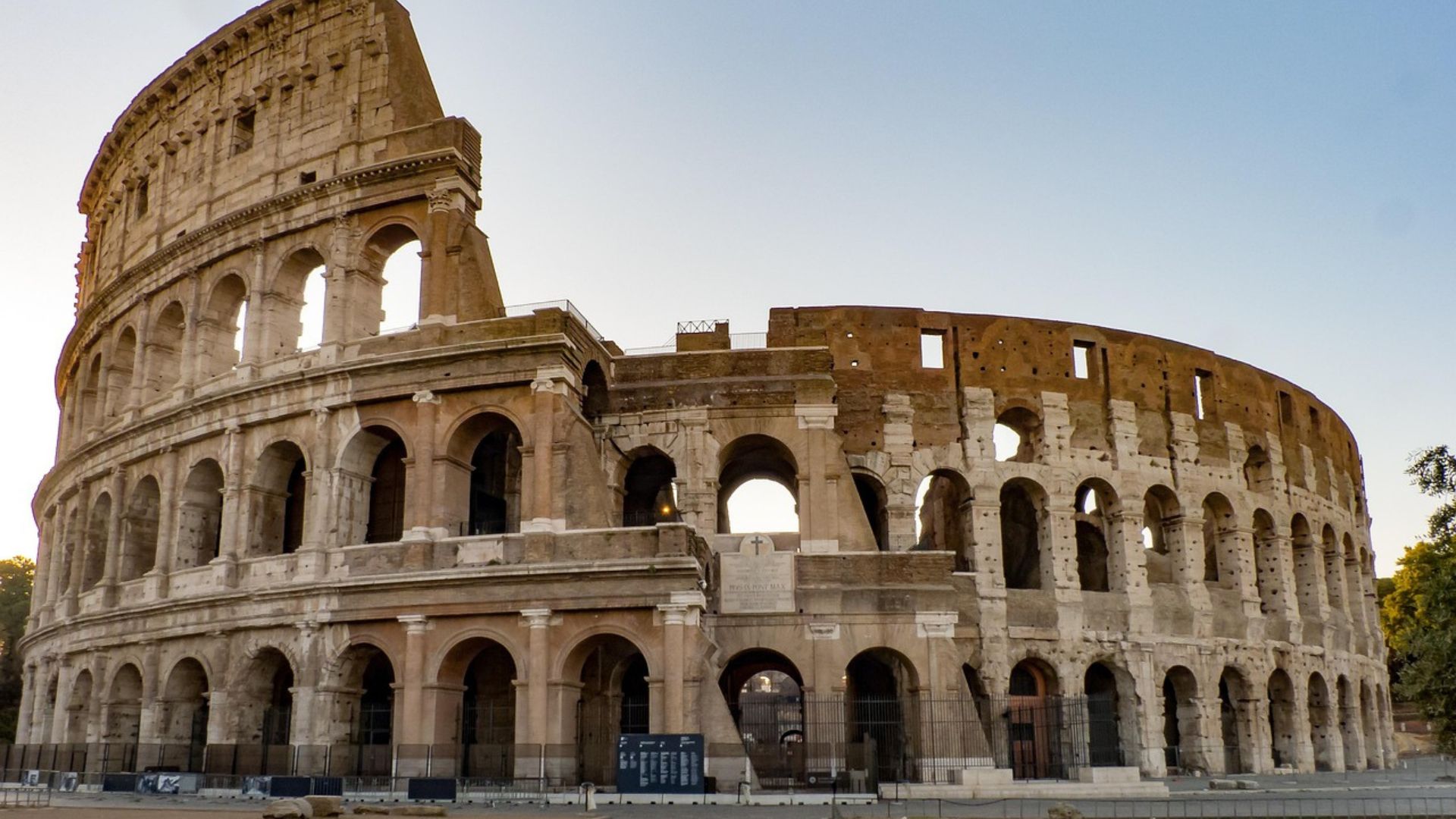Standing among the ancient Greek columns of Metaponto, I felt like I’d stepped straight into the past. This coastal settlement once thrived as part of Magna Graecia.
You’ll find Metaponto in the “instep” of Italy’s boot, and it’s one of the most important archaeological sites for Greek culture in southern Italy. The columns here have stood tall for centuries, battered by the elements but still remarkably intact. The sea breeze sweeps through, carrying the same salty air that ancient philosophers and traders once breathed.
Metaponto’s story fits right into the bigger tale of Magna Graecia, where Greek colonists set up lively communities all along the coast. As I wandered through the archaeological park, I kept thinking about how these settlements blossomed into hubs of art, architecture, and big ideas.
The columns, silhouetted against the Mediterranean, really nail that feeling of ancient Greek grandeur.
My curiosity about Metaponto only grew as I learned how archaeologists dug up its history piece by piece. Unlike the more famous Greek ruins, Metaponto feels more personal—you can explore at your own pace, without being jostled by crowds.
The columns rising from the plains tell a story of cultural exchange and clever architecture, shaping southern Italy’s identity for centuries.

The Timeless Origins of Metaponto
Metaponto’s roots go back to some gutsy settlers who turned a coastal stretch between the Bradano and Basento rivers into one of the most important Greek colonies in southern Italy.
Its beginnings trace a fascinating path from prehistoric settlements to a bustling Greek polis.
From Myth to Reality: Tracing the Beginnings
I’ve always wondered how Metaponto made the leap from legend to real history. Archaeologists uncovered evidence that people lived here long before the Greeks showed up.
The spot’s location near the Gulf of Taranto made it a natural magnet for early settlers.
Some local legends say Nestor, a hero from the Trojan War, founded the city, though historians argue about that. Still, by the 8th century BCE, this place had become important enough for organized colonization.
The name “Metaponto” has mysterious roots, maybe coming from Metabos, a legendary hero I came across in old texts while researching the area.
The Iron Age and Early Settlements
Before the Greeks, I found out that indigenous communities had already put down roots here during the Iron Age. They left behind pottery shards and burial sites that archaeologists still dig up across the region.
The Oenotrians and other Italic tribes probably lived here, working the land and raising animals. Their villages were small, with simple buildings and shared spaces.
What strikes me is how these early folks adapted to the coast and set up trade with other Mediterranean cultures. These first settlers laid the groundwork for the more complex society the Greeks would build later on.

Influence of the Greeks: Colonization and Expansion
Greek settlers from Achaia arrived in the second half of the 7th century BCE. They came searching for new opportunities, hoping to escape the crowding back home.
They brought their Doric dialect, their religious customs, and their building know-how. In no time, they turned the settlement into a proper Greek polis, complete with temples, public buildings, and an organized city layout.
It’s fascinating how they positioned Metaponto as a rival to nearby Taranto, another Greek colony. Politics shaped a lot of Metaponto’s early growth and alliances.
The Greeks introduced advanced farming, making the most of the rich plains. They grew so much grain that the ear of wheat became Metaponto’s symbol on its coins—I’ve spotted them in local museums, and they’re pretty striking.
Architectural Marvels: Exploring the Greek Columns
The ancient Greek columns of Metaponto stand as silent witnesses to a vibrant past. These architectural wonders show off the skill and vision of Greek builders who brought their traditions to southern Italy.
The Sanctuary of Hera: Magnificent Doric Columns
Whenever I walk through the Sanctuary of Hera, those massive Doric columns always impress me. Even partly ruined, their capitals measure about 2 meters square, and they command attention.
The Doric order is the oldest and most straightforward of the Greek styles. Its chunky, plain look matches the sanctuary’s solemn vibe. Unlike the fancier Ionic or Corinthian columns, these just have simple round capitals—no fancy carvings.
What gets me is how the columns are spaced to create optical illusions. If you stand in just the right spot, they line up perfectly, showing off the Greeks’ clever eye for perspective.

Metaponto’s Agora and Its Panoramic Views
The agora formed the heart of civic life in ancient Metaponto, framed by columns that once held up covered walkways. From this high spot, I take in sweeping views of the countryside and the distant sea.
Here, the columns use the Ionic order, easy to spot by their spiral scrolls at the top. This style suits a place meant for business and socializing, not worship.
I love how the builders set up the columns to catch sea breezes. The gaps between them work as natural vents, keeping the marketplace cool even in the blazing summer.
Sanctuary of Zeus: Sacred Spaces by the Sea
Down by the coast, the Sanctuary of Zeus stands with its weathered columns rising against the Mediterranean. This spot feels especially powerful—waves crash nearby as ancient stones reach skyward.
The columns here blend Doric and Ionic elements, creating a style that’s a bit of a hybrid. Maybe the sanctuary was built during a transition or renovated later—hard to say for sure.
Stone analysis shows the builders used local limestone, then coated it with stucco to mimic marble. That’s a smart workaround, honestly—practical and clever.

Residential Area: Everyday Life Among Ancient Columns
Away from the big monuments, I found smaller columns tucked into residential buildings. These weren’t just for show—they held up upper floors and created shady porticos.
The residential columns used simpler methods than the grand ones. Builders stacked clay drums instead of carving stone, then plastered and painted them to look more expensive.
What really gets me is the human touch—worn thresholds, smoothed surfaces from centuries of use. I can almost see families gathering under these porticos, sharing stories and escaping the sun.
Metaponto in the Wider Mediterranean Story
Metaponto’s story connects to the bigger Mediterranean picture. Its spot on the coast made it a key player in the shifting powers and cultural exchanges of the ancient world.
Hellenistic Period: Transformation and Resilience
The Hellenistic period brought big changes to Metaponto after Alexander the Great’s conquests. Around 330-320 BCE, the city started adapting to new political realities but kept its Greek spirit.
Archaeological finds show Metaponto thrived during these years. Pottery and architecture from this era connect the city to the wider Hellenistic world, stretching from Greece all the way to Mesopotamia.
Pyrrhus of Epirus showed up in 280 BCE, shaking things up with his campaigns against Rome. His arrival briefly put Metaponto in the spotlight.
Trade networks grew, bringing exotic goods from Alexandria and the East. These connections helped Metaponto hold onto its culture even as the world around it changed.

Metaponto and the Roman Conquest
Roman legions pushed into the region during the Pyrrhic War (280-275 BCE), and Metaponto’s fate changed for good. I find it fascinating to see how the city slowly absorbed Roman influence.
The takeover didn’t happen overnight—it played out through military and diplomatic moves. By 272 BCE, Metaponto had fallen under Roman dominance, though it kept some independence at first.
Roman architectural touches started popping up alongside Greek styles. You can spot this blend in the ruins scattered around the site.
The economy shifted, focusing on grain production for Rome. Local pottery picked up Roman design trends but still held onto some Greek techniques.
Cultural Crossroads: Arabs, Byzantines, Goths, and Beyond
After Rome fell, Metaponto became a meeting point for different cultures. The Byzantine Empire left its mark, and I found some intriguing religious artifacts in the local museum.
Gothic forces under Totila swept through around 550 CE, bringing their artistic touches. Their brief rule left subtle traces that you can still spot if you look closely.
Arab raids from the 7th century on brought instability but also new crops and farming methods. These Middle Eastern influences changed the local economy and even the food.
You can see this cultural mix in place names, religious customs, and traditional crafts. I’d suggest taking a guided tour—there’s so much history layered here, it’s easy to miss on your own.
By the Medieval era, Metaponto had faded from its ancient glory but still acted as a cultural bridge between East and West. Its story shows how Mediterranean communities absorbed and transformed outside influences.

Lost Splendor Rediscovered: Excavations and Artistic Remnants
Archaeologists at Metaponto have uncovered a treasure trove of ancient Greek artifacts and buildings, painting a vivid picture of life in this once-busy colony.
Decades of careful digging have turned up everything from delicate frescoes to elaborate burial sites.
Frescoes and Artwork: A Window Into the Past
The stunning frescoes unearthed in Metaponto blew me away. These painted walls show daily life, myths, and religious scenes that whisk you back thousands of years.
Somehow, the blues, reds, and yellows have survived all this time underground.
One fresco that stuck with me shows a seaside banquet—figures in Greek robes feasting near the same columns we see today. The details are incredible, right down to the food and the expressions on everyone’s faces.
Local artists also made beautiful pottery with bold red and black designs. I spent ages in the museum, just admiring how each piece tells its own story of Metaponto’s artistic achievements.
Necropolis and Burial Traditions
The necropolis at Metaponto offered a peek into how these ancient Greeks honored their dead. Instead of the simple graves I expected, I found elaborate burial chambers filled with jewelry, pottery, and personal treasures.
The cemetery layout reflects the social structure of the community. Wealthy citizens got larger tombs with fancier goods, while ordinary folks rested in simpler graves.
I found the burial customs especially interesting—some tombs had coins placed in the mouth of the deceased, meant as payment for Charon to ferry souls across the River Styx.
Major Archaeological Discoveries and Findings
My favorite discovery at Metaponto has to be the Temple of Apollo Lykeios, which archaeologists uncovered in the 1960s. Its huge Doric columns still stand, a real testament to Greek engineering.
Inside, they found ritual objects that hint at complex religious ceremonies.
Recent digs have revealed residential areas with some surprisingly modern features:
- Underground water systems
- Heated floors in some wealthy homes
- Storage rooms for grain and olive oil
- Public meeting spaces
I was honestly surprised to see so many artifacts showing links to distant Mediterranean ports. Bronze from Egypt, glassware from Phoenicia, and even amber from the Baltic made their way here.
Now, digital mapping tools are helping archaeologists piece together the city’s layout, and every year brings discoveries.

Metaponto’s Enduring Inspiration Across Italy
The ancient Greek colony of Metaponto left a deep mark on Italian architecture and culture for centuries after its decline. Its classical beauty shaped the vision of countless Italian cities and inspired their most celebrated architects.
Echoes in Florence, Venice, and Verona
When I wander through Florence, I can’t help but notice Metaponto’s influence in the proportions of Renaissance buildings. The columns at the Uffizi Gallery instantly bring to mind those at Metaponto’s Temple of Hera.
Venice’s Palladian churches owe a lot to the Greek proportions first nailed down in colonies like Metaponto. The symmetry and harmony that make St. Mark’s Square so captivating? Yeah, those ideas started with the Greeks.
Verona’s Roman Arena shows how Greek ideals from Magna Graecia shaped Roman architecture. Every time I visit these cities, those clean lines and balanced columns from Metaponto seem to echo through these landmarks, even after all these centuries.
Influence on Andrea Palladio, Michelangelo, and Classical Architecture
Andrea Palladio, probably Italy’s most influential architect, spent years studying ancient Greek ruins. His villas and churches around Venice feature the same harmonious proportions that I spot in Metaponto’s temples.
Michelangelo, too, got it. His work on the Laurentian Library stairs in Florence shows how well he understood classical tension and release concepts the Greek colonies along Italy’s coast developed ages ago. Those monumental stairs create drama using principles that places like Metaponto explored first.
Key Greek Elements Adopted by Italian Masters:
- Balanced proportions
- Doric and Ionic columns
- Triangular pediments
- Symmetrical layouts
- Mathematical precision
Linked Legends: Arezzo, Ferrara, and Iconic Monuments
Arezzo’s piazzas show off the same rational planning you see in Metaponto’s urban grid. When I wander its streets, I can almost feel the mathematical precision that those Greek colonists brought to southern Italy.
Ferrara’s Renaissance castle uses defensive elements that grew out of Greek colonial fortifications. Its thick, imposing walls always make me think of the old boundary markers from ancient Metaponto, just reimagined for medieval warfare.
The Colosseum in Rome, even though it’s unmistakably Roman, borrows a lot from Greek theatrical design in the southern colonies. That curved seating? It’s almost a direct echo of the Greek theaters that once filled up with crowds in Metaponto and other Magna Graecia cities.
Modern monuments all over Italy, from Milan down to Naples, still lean on these ancient ideas. Honestly, it’s kind of amazing how a small Greek colony keeps shaping what we think of as beauty and balance, even now.


